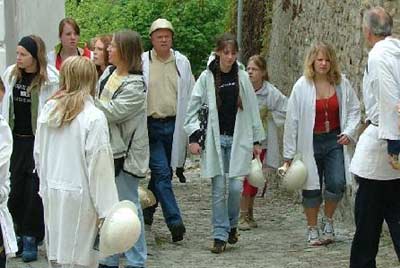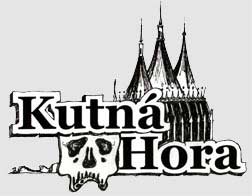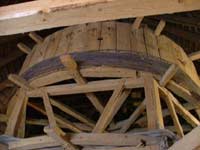Affordable travel in the Czech Republic |
Outside Prague |
| • Kutná Hora |
| • Litomyšl |
| • Olomouc |
| • Český Krumlov |
| • Karlovy Vary |
| • Mělník |
| • Kutná Hora |
| • Karlštejn castle |
| • Terezín |
| • Lidice |
| • Adršpach Rocks |
| • Bohemian Paradise |
| • České Budějovice |
| • Český Ráj |
| • Hradec Králové |
| • Liberec |
| • Plzeň |
| • Telč |
| Mikulov |
| Ostrava |

Hradek and the Silver Mines Hradek (small castle) is the name of the building that houses the main branch of the Czech Museum of Silver. It was built into Kutná Hora’s fortifications in the 1300’s as a guard tower, but was later reconstructed for use as an aristocratic residence. Two tours
The second is a more adventurous walk around some of the medieval mine sites and a descent deep into the cold, dark underbelly of Kutná Hora. There are warnings that the mine tour is not suitable for anyone with a fear of enclosed spaces, or a cardiac, nervous or respiratory complaint, but I decided to risk it with my asthma and shelled out for the ticket. Suit up
The first part of the tour is a climb down a modern steel staircase of 160 steps, approximately equivalent to a six-storey building. At the bottom, the actual mine is a series of small caverns, some with deep shafts holding up to 50 metres of crystal clear water. Along with a coat and helmet, you’ll have your own powerful battery torch and it’s possible to see a long way into the shafts beneath the surface of the water. I was amazed by how little space the miners had to work in. Apparently they would find a vein of silver and just follow it wherever it went; so the tunnels are no larger than the vein or the minimum needed to squeeze through. The guide explained that medieval Europeans were usually much smaller than their modern relatives. Black hole The tunnel grew smaller and smaller the further we went and the lowest point was around 120cm/4 feet. I liked my helmet more and more every time I scraped my head along the top of the shaft. The tunnel opens out into another small cavern where the guide stops and asks everybody to turn off their torches, and then almost covers hers, to show what poor light the miners worked in, and why their coats were white. She then turns her torch off completely to demonstrate complete darkness, which is unsettling no matter how much the logical part of your mind tells you it’s OK. Out into the sun From that cavern its back out into the tunnel, across an underground branch of the Vrchlice River, and back out into the daylight on the hillside below Hradek. From there it’s a short walk to return the equipment and see the final display, which you’re likely to find much more fascinating than the displays at the beginning, having actually been down into the mines yourself. I sometimes try to avoid guided tours, and prefer places that I’m free to ramble at my own pace, but this was exceptional. It’s one of the best tours I’ve done anywhere and is certainly worth considering for any visit to Kutná Hora. Hrádek |
 |
See and Do |
| • Kutná Hora Overview |
| • Daytrip to Kutná Hora from Prague |
| • Bone Church |
| • St. Barbara's cathedral |
| • The Silver Mines |
| • The Royal Mint |
| • The Streets and Squares |
Eat, Drink and Sleep |
| • Dačický beerhall |
| • Restaurant V Ruthardce |
| • Hotel/Pension U Kata |
| • Check Kutná Hora Hotel Rooms |
| • Check availability of Prague Rooms |
| Getting there |
| • Getting to Kutná Hora |
| • Kutná Hora Daytrip map to print |
• Home •Blog• About• Contact• Sitemap •Links•
Outside Prague last updated June 13th, 2010. All text and images Copyright 2007-2010. Articles may be excerpted for review, or printed for use by individual travellers.
Complete articles or images may not otherwise be reproduced by print, electronic or other means.
 Two different tours are offered through Hradek. The first covers the building itself, with its painted renaissance ceilings and wall frescoes, to see displays of mining technique and the history of silver mining in Kutná Hora.
Two different tours are offered through Hradek. The first covers the building itself, with its painted renaissance ceilings and wall frescoes, to see displays of mining technique and the history of silver mining in Kutná Hora.  The tour begins in the courtyard of Hradek, with a small display of mining equipment and then progresses to the massive horse-powered winch that was used to lift a tonne of silver ore at a time to the surface. Under the wooden shelter of the winch is another display of mining equipment. Centuries old winches, hammers, and picks are all on display and there’s a rack of modern white coats and helmets that the guide will help you choose from. All dressed up in your new gear you’ll be led out the gate for a short but conspicuous walk to the entrance of the mine itself.
The tour begins in the courtyard of Hradek, with a small display of mining equipment and then progresses to the massive horse-powered winch that was used to lift a tonne of silver ore at a time to the surface. Under the wooden shelter of the winch is another display of mining equipment. Centuries old winches, hammers, and picks are all on display and there’s a rack of modern white coats and helmets that the guide will help you choose from. All dressed up in your new gear you’ll be led out the gate for a short but conspicuous walk to the entrance of the mine itself.